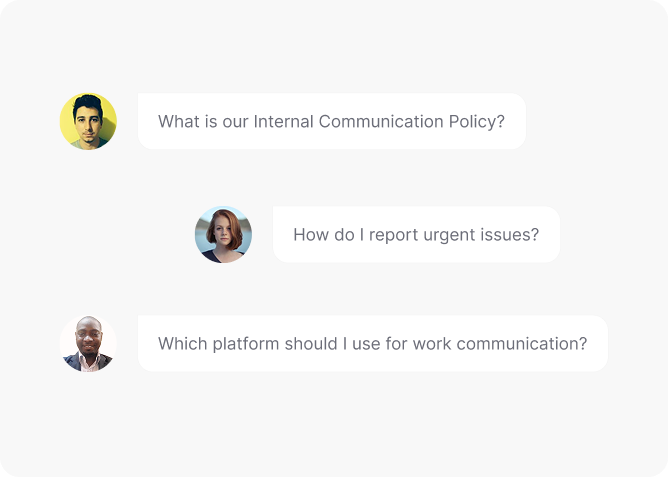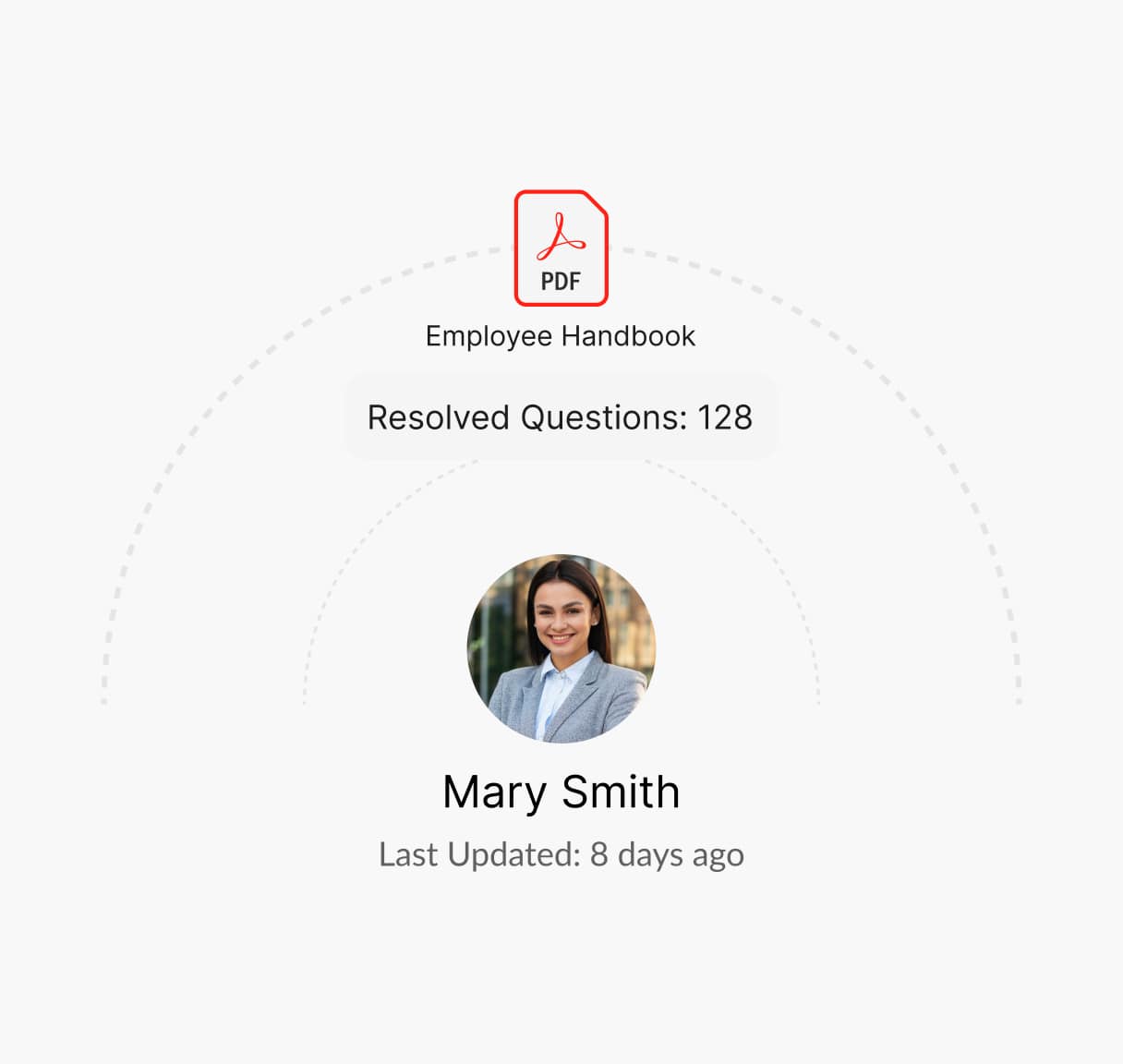Everything You Need to Know About Internal Communication Policy
Effective communication fosters collaboration and efficiency. An Internal Communication Policy establishes guidelines for messaging platforms, information sharing, and professional conduct, ensuring smooth and transparent interactions across the organization.

What is a Internal Communication Policy?
An Internal Communication Policy is an HR document that establishes guidelines for how employees share information within the organization. It covers approved communication channels, confidentiality, response times, and etiquette.
A strong internal communication policy promotes transparency, collaboration, and alignment across teams.
Guidelines for Creating a Internal Communication Policy
A structured internal communication policy fosters transparency, efficiency, and engagement by defining how employees should share information within the organization. Here are essential guidelines:
Define Approved Communication Channels
Establish primary tools such as email, intranet, messaging apps, or internal newsletters for workplace communication.
Encourage Open and Inclusive Communication
Promote a culture where employees feel comfortable sharing ideas, concerns, and feedback at all levels.
Ensure Data Security and Confidentiality
Outline best practices for handling sensitive information and preventing data leaks.
Clarify Response Time Expectations
Set guidelines for timely responses to messages, emails, and urgent communications.
Differentiate Formal vs. Informal Communication
Specify the tone and etiquette expected in different communication scenarios, from official reports to casual chats.
Train Employees on Communication Tools
Offer workshops or resources to help employees maximize the use of internal platforms effectively.
What is Covered in an Internal Communication Policy?
An effective Internal Communication Policy should include the following:
Communication Platforms and Tools
List approved channels for professional discussions, including email, chat apps, and project management tools.
Guidelines for Formal Announcements
Define how important updates, policy changes, and leadership messages should be communicated.
Confidentiality and Security Measures
Outline protocols for handling sensitive company information, ensuring data privacy and protection.
Meeting and Reporting Protocols
Specify how teams should schedule meetings, share reports, and document decisions.
Crisis Communication Procedures
Establish how emergency situations or company-wide issues should be addressed and communicated.
Employee Feedback and Engagement
Encourage two-way communication by providing platforms for employee suggestions and concerns.
Compliance with Workplace Conduct Policies
Align internal communication with the company’s code of conduct, preventing harassment and misconduct.
Need help creating an Internal Communication Policy?
How Winslow helps HR pros save time on responding to internal communication policy questions
Managing communication guidelines can be time-consuming, but Winslow, your AI-powered HR assistant, simplifies the process:

Instant answers anytime
Winslow makes your Internal Communication Policy easily accessible via Slack, Teams, or email. Employees can instantly check approved communication channels, escalation procedures, and confidentiality guidelines—ensuring streamlined collaboration.
Personalized Support
Winslow instantly answers employee questions, including those about your Internal Communication Policy, ensuring clarity on email usage, meeting protocols, and reporting structures.


Analytics and Insights
Winslow tracks policy-related queries, helping HR teams identify trends and common concerns. This data enables organizations to refine their policy, improve reporting channels, and address recurring issues proactively.
Save Time Managing Internal Communication Policies with Winslow
Clear communication is key to productivity, but answering repeated policy questions can be a drain on HR. Winslow ensures employees instantly access guidelines on communication channels, reporting structures, and best practices—keeping teams aligned while saving HR time.
Frequently asked questions
Have further questions about Winslow, contact us at sales@usewinslow.com
How should HR teams ensure internal communication remains clear, engaging, and aligned with company culture?
HR should establish a content framework for emails, meetings, and announcements, ensuring clarity and alignment with company values. Using employee feedback channels helps refine messaging over time.
What guidelines should HR establish for using internal communication tools like Slack or Teams?
HR should set response time expectations, appropriate use cases for different tools, and escalation protocols for urgent matters. Communication etiquette training ensures professional and efficient interactions.
How can HR measure the effectiveness of internal communication strategies?
HR should track engagement analytics, conduct quarterly communication surveys, and analyze employee feedback trends to refine strategies.
What should HR do to prevent communication silos between departments?
Implementing cross-departmental meetings, shared digital workspaces, and knowledge-sharing sessions fosters collaboration.
How should HR handle crisis communication to ensure fast and accurate information dissemination?
HR should establish a crisis response team, create pre-approved messaging templates, and use real-time updates via multiple channels (email, Slack, meetings) to prevent misinformation.
Additional resources
Device Usage Policy
Managing employee leave effectively is vital for maintaining workforce productivity and compliance....
Learn moreconfidentiality policy
Protecting sensitive information is crucial. A clear Confidentiality Policy outlines guidelines for...
Learn moreclaim reimbursement
Ensuring fair compensation for expenses is key. A clear Claim Reimbursement Policy...
Learn more




